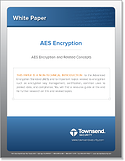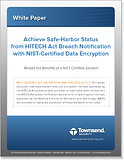Download Podcast: IBM i Single Sign On (SSO) with Patrick Botz
|
Anyone active in the IBM i community knows Patrick Botz from his time as the Lead Security Architect for the IBM i group in Rochester, Minnesota. Patrick worked for years promoting security best practices, and worked diligently to solve one of the more perplexing and complex issues for large accounts – Single Sign On (SSO). Everyone with a large number of users has felt the pain of managing lots of user accounts and passwords across a lot of different types of systems. For any organization with more than a few users, managing user accounts and passwords has traditionally been an expensive proposition.
But it is one that you can now tackle very effectively.
Because of a lot of work that Patrick did during his stint at IBM, IBM i customers now have the technology they need for Single Sign On (SSO). Yes, you have the technology you need, you just didn’t know it.
Patrick is now in private life providing services to customers who want to reduce their help desk costs for managing user accounts and passwords. You can actually get to an SSO solution without purchasing additional software, and Patrick can help you achieve this. His company, Botz and Associates, has an affordable, packaged services solution called SSO stat! that will get you up and running with SSO very quickly. And this is not a drive-by engagement. He focuses on knowledge transfer during the engagement so that you can make it on your own, and he provides a support offering in case you want to have his expertise on demand.
Password management continues to be a challenge for all organizations. Poor management leads to insecure passwords and inconsistent policies – and these lead to more data breaches. We can do better. And Patrick Botz can help you get there.
By the way, Patrick worked for years at IBM, but before that he was a UNIX kind of guy. Today his expertise spans UNIX, Linux, Windows, Mac, and IBM servers. We all have multiple technologies in our organizations and he can help you stitch them all together.
We just did a podcast together with Patrick on Single Sign On (SSO) that I am sure you will find interesting and I encourage you to listen to it now.
Disclaimer: Neither I nor Townsend Security has a financial relationship to Botz and Associates. We’ve hoisted a beer together, and I’ve seen his work at mutual clients. He’s someone I think you should get to know.
Patrick











